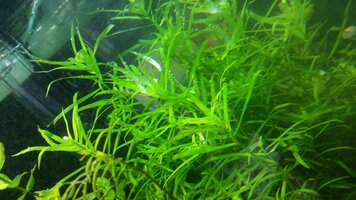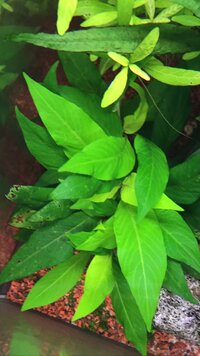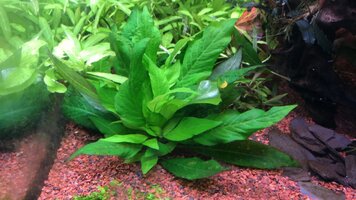I tried everything to get perfect co2, i believe my co2 is now perfect, flow is everywhere, every plant is moving nicely. I did EI in most tank which make plant grow quicker but not better for sure, i tried kind of lean dosing but i always added potassium because i saw ADA approach which was my mistake. Few times ago @_Maq_ wrote on a topic of mine about ratio about Mg:Ca:K ratio, since that day i changed my mind which was set that plant need tons of nutrients to grow no matter what it need to be plenty. I changed my mind since that response and tried to go leaner on the potassium, i always added more than Mg and Ca. I though it was iron deficiency but when i added iron, the deficiency was still there in RO water...
Hetheranthera Zosterifolia is an easy plant which had so much deficiency problems in my tanks, so i reduced the potassium below the Ca/Mg since then plants are growing fine, no stunted growth, i'm not and expert and i don't know if that post is usefull but i trully believe that @_Maq_ is getting in the right direction at least for me.
Happi also converted me to lean dosing, that guy have the most healthy and colorful plant i've ever seen. I can be wrong, maybe clive or other will prove me, but i doubt EI user can get such colors
Hetheranthera Zosterifolia is an easy plant which had so much deficiency problems in my tanks, so i reduced the potassium below the Ca/Mg since then plants are growing fine, no stunted growth, i'm not and expert and i don't know if that post is usefull but i trully believe that @_Maq_ is getting in the right direction at least for me.
Happi also converted me to lean dosing, that guy have the most healthy and colorful plant i've ever seen. I can be wrong, maybe clive or other will prove me, but i doubt EI user can get such colors
Attachments
Last edited:









